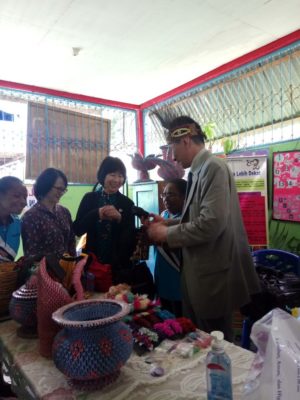23 April 2019 · Global Partnership for Zero Leprosy
Program Profile: Indonesia
Over the past several decades, great efforts have been made in controlling leprosy worldwide. However, leprosy remains a challenge in many countries, with South-East Asia bearing the brunt. These countries are all determined to overcome leprosy and its complications. Every month we are highlighting a country in the WHO South East Asia Region to show the steps they are taking towards a leprosy-free region.
This month we are looking at the country of Indonesia, which has more than 17,000 islands. The country consists of 34 provinces and 514 districts with a population of over 261 million people.
Background
Over the past few years, Indonesia has made significant progress in controlling leprosy. Since 2008, the registered prevalence and the number of new cases detected for leprosy has been on a steady decline. Guiding the country’s leprosy elimination efforts, Indonesia implemented a Leprosy Control Program comprised of key National Indicators.
 These National Indicators include:
These National Indicators include:
- Number of provinces that achieve elimination of leprosy as a public health problem, i.e. less than 1 case per 10,000 population on treatment
- Proportion of new leprosy cases without disability
- Number of districts/municipalities that achieve elimination of leprosy as public health problem
- New cases who complete treatment in time
Since 2016, there has been significant improvement among all four national indicators. The number of provinces that achieved elimination as a public health problem increased from 23 provinces to 34 provinces in 2019. The proportion of new leprosy cases without disability increased 10%, starting from 85% in 2016 to 95% in 2019. The number of districts/municipalities achieving elimination as a public health problem has also increased since 2016, starting with 367 and currently at 464 districts. Lastly, new cases who complete treatment in time has increased 7%, with a current statistic of 92%.
In addition to Indonesia’s National Indicators, Indonesia implemented Global Strategy Indicators presented by WHO’s Global Leprosy Strategy for 2016-2020.
These Global Strategy Indicators include:
- Child Cases with Grade-2-Disability (G2D)
- Rate of Newly Diagnosed Leprosy Patients G2D
- Number of Legislations allowing discrimination on basis of leprosy
Funding
Funding activities are a key driver of Indonesia’s attempts to controlling leprosy. The national funds for the activities amount to 30.8 billion rupiahs (about 2.2 million dollars). The activities that are being funded include intensified case finding activities in over 90 districts, national training, advocacy of low endemic districts, and information, education and communication (IEC) materials.
The combined efforts of Indonesia’s National Indicators and WHO’s Global Strategy Indicators has resulted in great progress thus far and will continue to have a positive impact in controlling leprosy.
This article was written by Sarah Doorodgar, Global Partnership for Zero Leprosy intern.